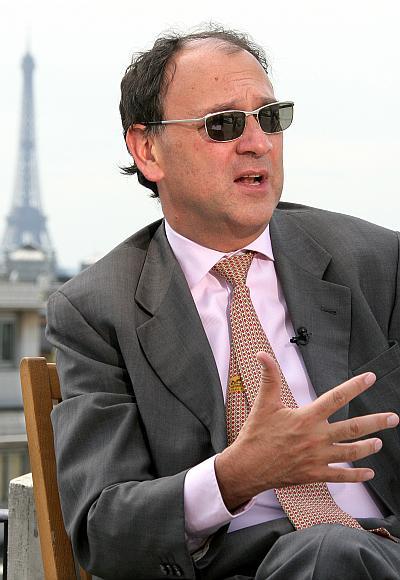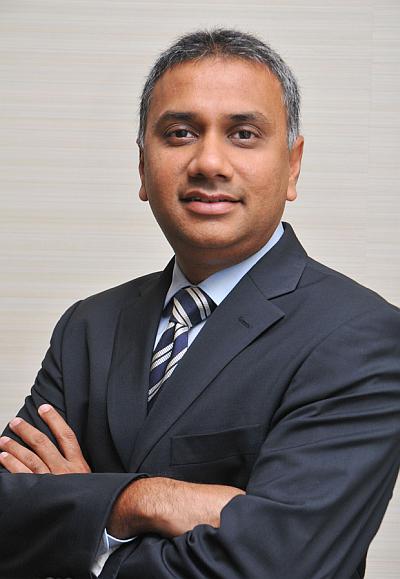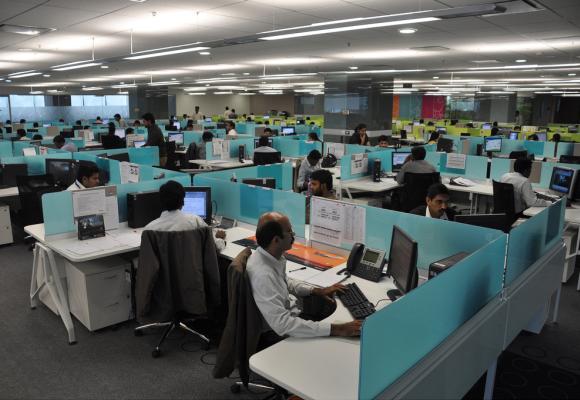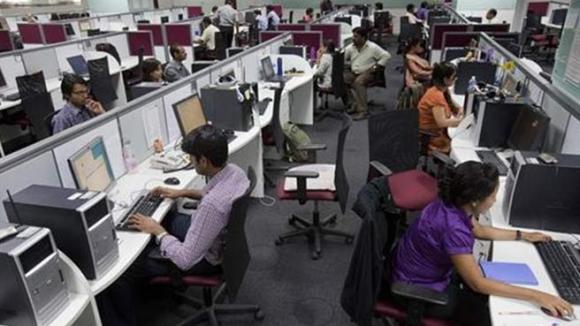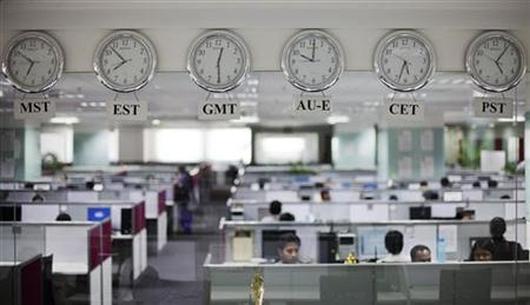 | « Back to article | Print this article |
How Capgemini is using India to grow
In April this year, when India's largest IT services provider, Tata Consultancy Services (TCS), announced the acquisition of France-based Alti, it hinted towards the next area of focus for the industry: continental Europe.
Europe, excluding the UK, is still an under-penetrated market for IT players. However, one company which has successfully leveraged its India offshore centre for clients in Europe is Paris-headquartered Capgemini.
It's a rare feat as after Dublin-headquartered Accenture, which has over 80,000 employees in India, Capgemini is only the second European company to have set up a base in the country.
Capgemini set foot in India in 2000 and since then there has been no looking back.
Its focus on scaling up its India operations has been so aggressive that Paul Hermelin, the group's chairman and CEO and now also the French government's special representative to boost Indo-French economic relations, has been nicknamed "Mr India".
That's not surprising as he has been the driving force behind the company's India focus.
Click NEXT to read more...
How Capgemini is using India to grow
No doubt a foothold in the country has been beneficial for Capgemini. Its India centre has helped it become a global firm with delivery centres across regions. It has over 41,900 employees in India of which 20-25 per cent cater to clients in Europe.
Capgemini holds several valuable lessons for Indian IT players looking to increase their presence in Europe. Its India strategy has been markedly different from its peers right from the start.
Unlike other multinationals, Capgemini has a sizeable number of Indians in senior management roles. For instance, the company's group management board has two Indians: Salil Parekh, chief executive of application services (North America, UK, financial services global business units, A-Pac), and Aruna Jayanthi (chief executive of Capgemini India).
There is also an India representative on the board of each of its large business units. "Almost 20-25 people from India are in senior roles driving businesses across the company," says Parekh, adding the strategy has gone a long way in helping Capgemini scale up its India business.
Click NEXT to read more...
How Capgemini is using India to grow
Parekh would know as he has worked closely with Hermelin on growing the India centre's business in the US, UK and Europe.
"I still remember our strategic retreat at Montreal in 2005 where Paul (Hermelin) said that India should have 40,000 employees. Then it was a big number and people thought that he was just saying some stuff. Today, the numbers that we have are much higher," he adds.
Small beginnings
Capgemini entered India in 2000 after it globally acquired the consulting business of Ernst & Young.
It gave it access to E&Y's India offshore centre, which had about 200 people, including senior consultants. Many of those people are still with Capgemini, some on the board of different units.
Parekh, too, came as a part of the E&Y acquisition and has the privilege of being its employee number one.
It was Hermelin's maiden visit to India in 2000 that convinced him of the need to set up base in the country if Capgemini wanted to have a shot at becoming a global player.
Click NEXT to read more...
How Capgemini is using India to grow
During the visit, Hermelin spent 10-12 days with several IT companies to get an understanding of things at the ground level. "Since that time he has always been focused on this region," adds Parekh.
Other than having Indians in senior management roles, Capgemini has also made India integral to its business by making it a hub for innovation.
From 2009 onwards, the company started creating centres of excellence for several of its industry verticals out of India. So far it has set up over 12 such centres.
Furthermore, in 2007, for the first time, the company's executive conclave was held in Mumbai. Since then it has become an annual event.
"Other than the top-down push, a lot of the senior management started getting measured on its offshore leverage. What is the percentage of work in their country that gets offshored? For instance, at present in the US, the offshore leverage is 60-65 per cent. At that time it was much lower. We had a year-on-year target on how that needle moves," says Jayanthi.
Click NEXT to read more...
How Capgemini is using India to grow
In 2012, the company added 769 deals that were primarily using the offshore model. These include deals from Bayer, Eon and TeliaSonera.
The offshore play has allowed Capgemini to grow its market share in the US and it is now putting the strategy to test in continental Europe.
Deepankar Khiwani and Ashwin Yardi are the two people who have been working diligently towards this.
Khewani, who is responsible for the European region, has also been given the additional mandate of managing business in the Nordics, Germany and Benelux.
Yardi, corporate vice-president, has been with the company for close to 16 years, and has been instrumental in putting in place systems and processes that cater to this region.
"We started this journey in 2005-06; then less than 50 per cent of the clients were offshored. It was driven by customers in continental Europe who had strong global presence. The primary focus was SAP and application management," adds Yardi.
Click NEXT to read more...
How Capgemini is using India to grow
Over the years, Capgemini has held on to a few things to gain offshoring clients in Europe including developing language capabilities, focused engineering and building relationships.
"For instance, we would have 30-40 French translators in our teams. The other focus area was building relationships. Other than having dedicated people working with customers, the structure we put in India, made sure that each of the senior leaders in India was mapped on to a particular geography," says Yardi.
Vital edge
Many say the company's managerial structures and its inherent advantage of being a European company will give it an edge over Indian players when it comes to gaining offshoring clients.
"It is a fact that language, labour and cultural issues are challenges for IT vendors in Europe. It is also true that European clients prefer to work with vendors who understand their issues. This is also evident as all the Indian players have been hiring locals to cater to this market. Capgemini already has a good local connect, add to this the scale in India," says Ian Marriott, research vice-president, Gartner.
Besides, Khiwani believes that Europe is in a peculiar situation as compared to the US which has looked at offshoring as pure cost arbitrage.
Click NEXT to read more...
How Capgemini is using India to grow
"A lot of European companies that began outsourcing in 2006 or 2007 started by setting up offshore capacity which was incremental to what they had internally. This just added to the complexity. As a consequence, customers have been dissatisfied," he adds.
This has helped Capgemini corner some large deals in continental Europe.
But there are challenges. "Europe will continue to be small. Even for us it is (offshoring) in the 20-30 per cent range. We would want to take it to 40-50 per cent in the next 3-4 years," says Jayanthi.
Capgemini is now looking to tap areas so far left untouched in its plans. Khiwani says the company has not been aggressive in cornering the commodity business.
"We have walked away from deals because they were just staff augmentation. But I think that was the time when customers had started their journey and we have not partnered with them. We have some catch-up to do" adds he.
And this is evident in Khiwani's mandate. "My single largest mandate is to drive right-shore deal with a heavy offshore focus. We have 500 managers who have worked with European clients for at least five years. That's a huge asset."
